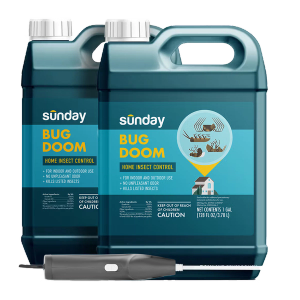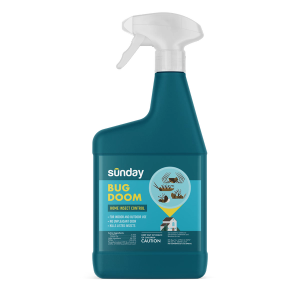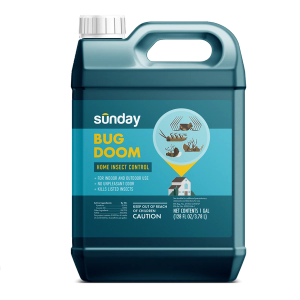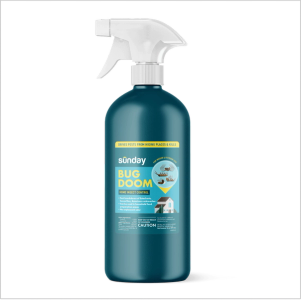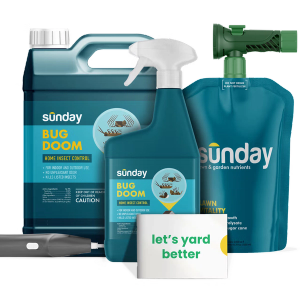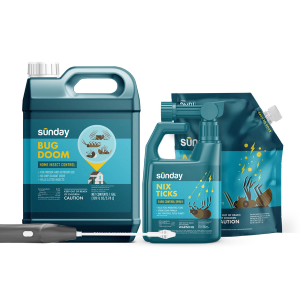When temperatures and weather aren’t ideal outside, you probably want to curl up and get comfy inside your home. Unfortunately, so do nuisance insects. If you missed opportunities to preventively reduce indoor pests, chances are they’re already indoors. But don't panic. Even with pests already making themselves at home, there's still time to control them and curb them for good.
Identify your indoor pest
These crawling creatures are looking to escape the unpleasant elements outside and keep hidden until conditions improve. The key to treating indoor pests is knowing where they like to hang out.
Where indoor pests crawl and hide
- Cracks and crevices near baseboards, windows, and doors
- Crawlspaces and storage areas
- Kitchen areas (like pantries, behind and under refrigerators, cabinets, counters, sinks, and stoves)
- Near fabrics (like closets, drawers)
- Hiding spots near plants, bookcases, or shelving
Sunday Tip:
Psst! Here are the most common indoor pests: ants, cockroaches, boxelder bugs, house centipedes, kudzu bugs, pantry pests (like beetles and silverfish), spiders, and stink bugs.
Get better pest control
Bug Doom contains dual active ingredients of chrysanthemum extract and canola oil. These powerful ingredients kill on contact to control pest infestations and maintain a barrier to prevent future ones.
Indoor pest control tips
- Spray directly onto insects to kill on contact or use as a perimeter treatment in areas pests might try to enter the home.
- Indoor pests may become more active on warm days or when inclement weather outdoor stops. Be ready!
- Eliminating pest problems requires follow-up pest prevention.
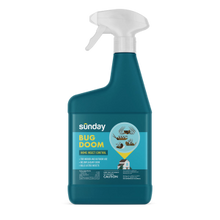
Bug Doom Indoor Insect Control Spray, 32 oz
- Made with pyrethrin (from chrysanthemum!) and canola
- Approved for use in food-prep areas
- No unpleasant odor
- Kills dozens of bugs on the spot
Prevent future pests
Preventing pests at home should start with integrated pest management (IPM), or naturally preventing pests. However, it can also be the critical follow-up to your Bug Doom treatment. When you sanitize your home, close off outdoor entry points, and restrict hiding spots for insects. You’ll reduce the number of pests you have to treat again later on.
Prevent pests indoors all year round
Pests have their place, and that’s in the great outdoors. But inside your home? Not so much. Sunday’s got you on the best management practices to protect the sacred spaces of your home and to keep pests in the places they should be—outside.
Spring
Start spring off right by inspecting inside and around your home. Check for new entry points into the home.
- Fill gaps where pests tend to enter (gaps around windows, wells and door frames, and utility lines that enter the home).
- Clean gutters before build-up and make sure spring rain in gutters directs away from homes.
- Maintain a vegetation-free zone around the house and don’t mulch directly along buildings.
- Set up a dehumidifier if you have a basement or lower level to reduce moisture-seeking pests.
- It’s termite szn. Look for termite mud tubes from soil to structure inside and outside along the foundation. Call professional services if you find anything of concern.
Summer
We’re spending more time outside—day and night—which means pests are going to be attracted to light, food, and water sources to enjoy outdoor spaces.
- Install yellow light bulbs near doorways and outside living areas to reduce the number of flying insects attracted to lights.
- Fixing screens and seal openings to your home.
- In areas where rain is prevalent in summer, make sure water drains away from the home—both out of gutters and that gutters are not overflowing.
Fall
Overwintering pests are getting ready for winter. Fall is the time to get ahead of pest plans to escape winter conditions and prevent them from getting indoors.
- If you have window air-conditioning units, remove them now to limit the entry of overwintering pests.
- Clean gutters during and after leaf fall, and make sure water drains away from the home.
Sunday Tip:
Encourage pests to utilize outdoor spaces over the winter instead by leaving places where pests can overwinter. Think keeping leaf debris in your yard, allowing some garden debris to remain, and stacking piles of branches in corners of the yard.
Winter
The time for trapping pests is here. Know where to looks for pests and prevent them—then start planning for exclusion next year.
- Store food in airtight containers t. This keeps out beetles and silverfish that will infest opened and stored products (think pasta, rice, and other grains).
- Check any firewood that you’re bringing inside and store it away from the home to prevent pests from catching a ride indoors.
- Don’t overwater your plants to avoid fungus gnats that emerge from too-moist indoor plants.
- Store bird seed properly outdoors in a sealed container to limit any infestations in your seed and storage shed.
- Avoid piling snow against building foundations so pests can’t sneak indoors through open entryways.
- In cold locations, inspect the attic for moisture-seeking pests that look for condensation on nails and ice dams forming inside.
Preventing pests in your home
Early spring and right before fall are the best times to prevent bugs in your home. Bonus: This timing conveniently aligns with when you’re cleaning house and prepping for the seasons ahead.
Remember that insects will begin to seek shelter as outdoor temperatures drop or become less than ideal. Follow your key pest prevention steps, and apply Bug Doom Home Barrier afterward. Apply every two weeks to strengthen the insect barrier in the spring once the frost subsides, and in the fall until your first frost occurs.
Ready to prevent pests all growing season long? Get a custom Sunday pest plan!
Cited sources
How to Bug Proof Your Home. Extension Foundation.
How to Pest-Proof Your Home. University of Kentucky Extension.
Insect Overwintering. Colorado State University Extension.
Pest-proofing Your Home. University of Arizona Extension.
Pests That Want to Winter With You. Cornell NYS Integrated Pest Management.



